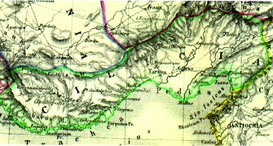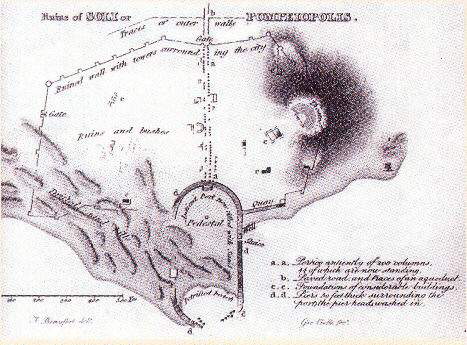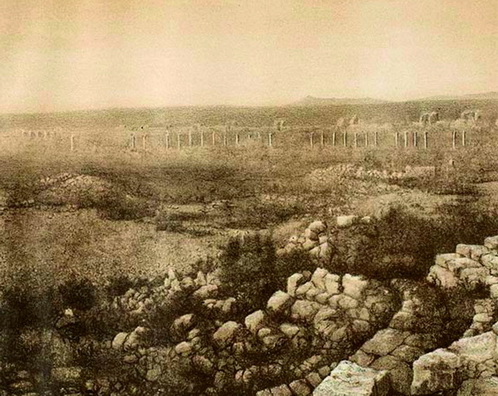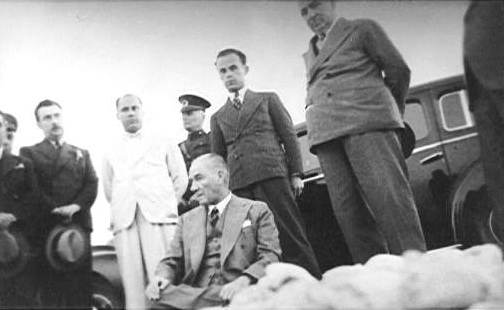|
Soli Pompeiopolis, situated in Mezitli-Viranşehir 11 km west of Mersin, is one of the nearest ancient sites to the city center.

The excavations that are being conducted since 1999 reveal that the city was one of the most important harbours in the eastern Mediterranean region since the 2nd millenium BC. The Colonnaded Street (cardo maximus) located on the north- south axis and monumental architectural remains in its environs : the theater on the slope of the mound, the harbour, the bath, the monumental tomb of Aratos, the remains of the fortification walls visible in the east of the harbour and other remains represent the monumental Roman period. According to a commemorative coin printed during the Antoninus Pius rule to celebrate the 209th anniversary of the refounding of the city, Soli- Pompeiopolis was founded in 66/65 BC by Pompeius the Great (Pompeius Magnus 106-148 BC). Strabo, 14.5.8 (671); Plutarch, (Pompeius, 28); Dio (36, 37); Pomponius Mela (13, 71) wrote that Pompeius the Great settled some of the pirates who were forgiven and veterans in the city and renamed it after his name Pompeiopolis.

The former name of the city was Soli. Diegenos Laertius (Solon 1, 51) asserts that the name of the city was originated from Solon who was once served as ruler of Soli. Solon (630-560 BC) both gave his name to the city and settled the Athenians in there. The word "solecism", a grammar term which means a syntactical error and a non standard usage of language, in western languages was derived from Soli. The inhabitants of Soli who were settled by Solon were notoriously using a corrupted form of the Athenian dialect, full of solecisms. The name Soli was first used by Hesiod. According to Hesiod, after the Trojan War, Amphilocus, the seer, son of Amphiaraus, was killed by Apollo and buried at Soli. One of the golden ages for Soli was during the Hellenistic period (330-30 BC). Alexander the Great surrendered the city without any resistance before his victory against the Persians at Issos. He offered sacrifices to Asclepius for the recovery of his illness at Tarsus. He also conducted his army in procession, celebrated a torch race and held athletic contests and musical performances (Anabasis 2.5.7). Alexander imposed upon the inhabitants a fine of 200 talents of silver, because they were more inclined to favour the Persians than himself and granted them the authority over their land. Stoic philosopher Chyrsippus whose father immigrated to Soli from Tarsus, comic poet-playwright Philemon and Aratus, author of Phaenomena written in verses may be cited among the famous citizens of Soli in the Hellenistic period (Strabo 14.5.8).
The Armenian King Tigranes attacked and plundered the town and forced people to resettle in his newly founded capital city Tigranocerta in the 70s BC to take part in construction works. In 68 BC, they were allowed to return to their homeland. The year 67 BC was a turning point and a new beginning in the history of the city. The Roman general Pompeius came to the region in 67 BC to cease the disorder. It was during Pompeius' reform program that the Romans took control of Cilicia (Cilicia Campestris/Pedias) region. The city was re-founded by Pompeius and it was renamed Pompeiopolis as a Roman city in 66/65 BC Pompeius settled veterans and ex-pirates and bestowed the status of "free city" (civitas libera)to Pompeiopolis.
Soli Pompeiopolis was frequently visited by British and French travelers in the end of the 19th century. The plans and gravures drawn by these travelers were found in the memoirs, journals and publications related to the history and archaeology of the city. Charles Robert Cockerell (1810-17), F. Beaufort (1811), John MacDonald Kinneir (1813-14), W. M. Leake (1824), J. A. Cramer (1832), L. De Laborde (1838), V. Langlois (1852-53), W. Barker (1853), W. Barlett (1834-35, 1842-45 ve 1853), Charles Texier (1862), P. Tremaux (1863), E. J. Davis (1875), V. Cuinet (1890), G. Alishan (1899) may be cited among the noteworthy travelers.


One of the most precise plans of Pompeiopolis was drawn by British Admiral F. Beaufort. In this plan, the theater situated in the north-east of the harbour, Soli Hoyiik adjoining the theater, the Colonnaded Street, walls and towers around the city are clearly visible.
Another well-known figure, Mustafa Kemal Ataturk, the founder and the first president of the Turkish Republic visited Soli Pompeiopolis together with the Governor of Mersin, Ruknettin Nasuhioglu and the Mayor, Mithat Toroglu on May 21 1938. It was his last visit to an archaeological site before his death.

Soli Pompeiopolis is famous in the field of archaeology for the hoard consisting of weapons and seals from the Middle Bronze Age which are claimed to be found in the site and these are now exhibited in the Berlin Staatlichen Museen.
|

